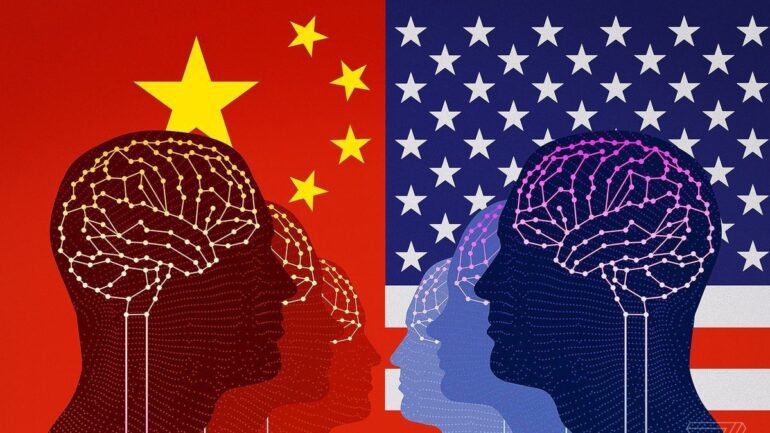TL;DR:
- China’s burgeoning AI industry faces a pivotal reliance on US technology, highlighted by the emergence of 01.AI, a Chinese startup utilizing Meta’s LLaMA model.
- Despite rapid growth, Chinese companies lag behind the US in generative AI development, fueling a competitive technological rivalry reminiscent of a modern Cold War.
- The reliance on US AI systems raises complex questions regarding China’s innovation model, blurring lines of national security and geopolitical strategy.
- Regulatory constraints and censorship in China hinder innovation and experimentation within the tech ecosystem, posing challenges to AI development.
- Chinese tech giants are striving to advance generative AI, yet face hurdles, including regulatory constraints and technological dependencies.
Main AI News:
China’s pursuit of AI dominance is encountering a crucial twist: heavy reliance on US technology. In November 2023, a fledgling Chinese startup, 01.AI, emerged as a top contender in assessing open-source AI systems, despite its tender age of eight months. Founded by prominent investor and technologist Lee Kai-Fu, 01.AI boasted substantial financial backing, a staggering valuation of US$1 billion (S$1.34 billion), and purportedly innovative AI technology. However, the revelation surfaced a startling truth: a portion of 01. AI’s technological prowess stemmed from Meta’s LLaMA, a generative AI model. Despite this reliance, Dr. Lee’s company augmented Meta’s technology by further enhancing its system through new data training, underlining China’s dependence on US innovation.
This scenario epitomizes a reality acknowledged by many in China. Despite fervent efforts to spearhead generative AI development, Chinese enterprises overwhelmingly lean on foundational systems from the United States. Industry insiders and leading engineers suggest that China trails the US in generative AI advancement by a significant margin, potentially exacerbating the fierce technological rivalry between the two superpowers, reminiscent of a modern Cold War era.
The quest for AI supremacy holds profound ramifications. Progress in generative AI stands poised to recalibrate the global technological landscape, amplifying productivity, propelling industries forward, and fostering future innovations. However, as Chinese entities endeavor to bridge the gap by embracing US-derived open-source AI models, Washington faces a conundrum. Despite attempts to impede China’s technological ascent through chip export restrictions and investment limitations, the US continues to propagate open-source software, inadvertently aiding China’s pursuit.
China’s newfound reliance on US AI systems, primarily LLaMA, raises pertinent questions about the country’s innovation paradigm. While China has produced global juggernauts like Alibaba and ByteDance, its adoption of American open-source technologies blurs lines of national security and geopolitical strategy. This complexity underscores the intricate interplay between technological innovation and geopolitical dynamics, shaping the global AI landscape.
In an era where AI reigns supreme, China’s ambition for technological leadership has encountered formidable obstacles. Regulatory constraints imposed by Beijing, coupled with censorship mandates and evolving compliance standards, impede innovation and experimentation within the Chinese tech ecosystem. The regulatory framework, characterized by stringent data limitations and application protocols, poses formidable challenges to AI development, deterring risk-taking and stifling innovation.
Despite these hurdles, China’s tech behemoths are mobilizing efforts to propel generative AI forward. However, the journey is fraught with obstacles, from regulatory constraints to technological dependencies. As China navigates this intricate terrain, the outcome remains uncertain, with the global AI landscape poised for transformative shifts.
Conclusion:
China’s dependence on US technology underscores the intricacies of the global AI landscape, signaling a nuanced interplay between innovation, regulation, and geopolitical dynamics. As Chinese companies navigate regulatory constraints and strive to advance AI capabilities, the market witnesses a transformative shift characterized by heightened competition and evolving strategic alliances. The delicate balance between innovation and dependency on US tech will shape the future trajectory of China’s AI industry and its impact on the global market.

